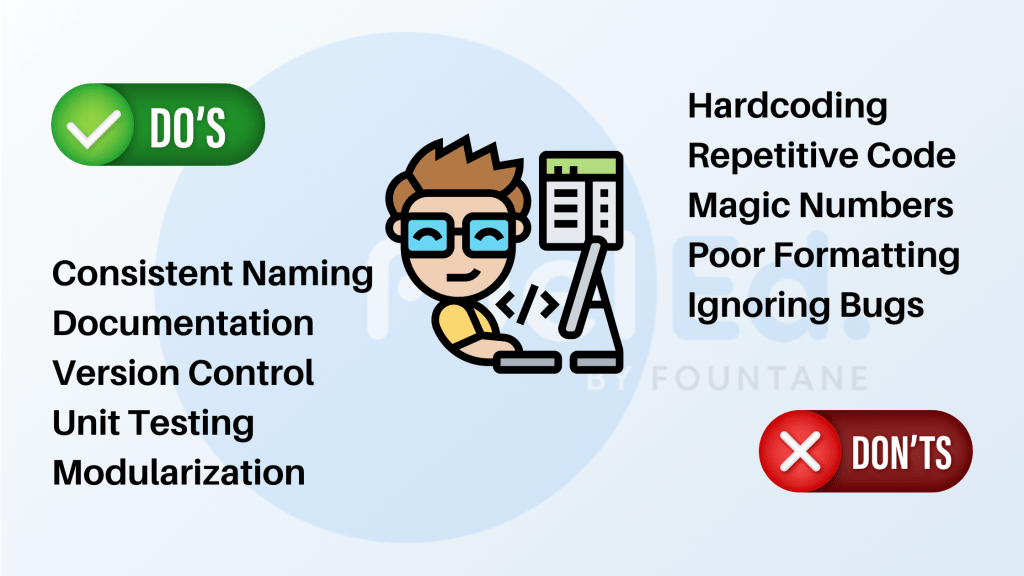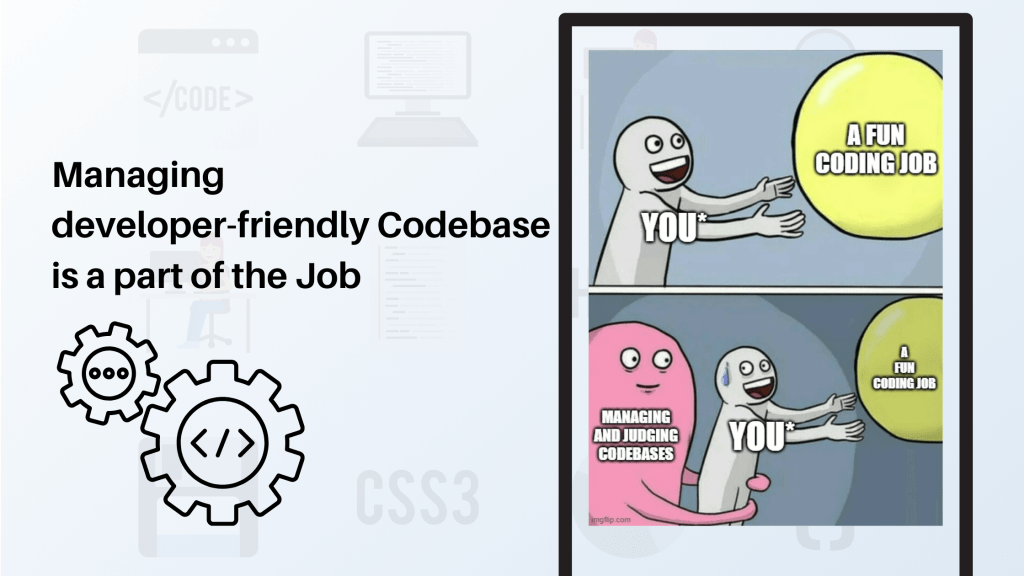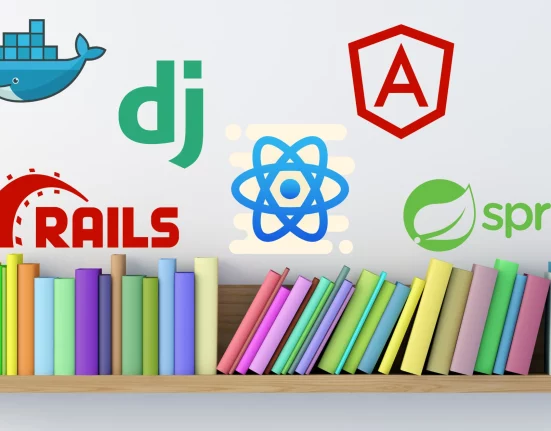Since the dawn of software development, developers have had to grapple with designing and implementing readable, scalable, and maintainable codebase. As technology continues to evolve at a rapid pace, it’s more important than ever that developers design their code bases in such a way that takes into account future changes and updates.
When you’re working with other developers and collaborating on the same codebase, it needs to be structured in a way that makes sense to everyone involved. That’s why creating a developer-friendly environment can make all the difference when developing an application or website.
This edition of Humans of Fountane takes a closer look at the do’s and don’ts of creating a developer-friendly codebase: from keeping coding standards consistent across teams to utilizing appropriate version control systems so that you can focus on what matters most: bringing your project to life.
What is a Codebase?
A codebase serves as the backbone of a software application. It is a repository of all the source code files, scripts, and other essential components that contribute to the functioning and success of the software. The codebase encompasses everything from the code written by developers to the utilization of third-party libraries and tools.
The significance of a codebase cannot be overstated, as it serves as the cornerstone of a software development project and is crucial for the creation of a robust, trustworthy, and high-quality application.
Why is it Important to Have a Developer-Friendly Codebase?

Having a developer-friendly codebase is essential for ensuring the success of any software development project. There are several reasons why it’s important:
- Improved Collaboration: A well-structured codebase makes it easier for developers to work together on the same project. When developers can understand the code and make changes without fear of breaking something, collaboration is smoother, and development times are faster.
- Faster Development: A developer-friendly codebase makes it easier for developers to understand the project and make changes, which can speed up the development process. This can lead to faster feature releases and a more responsive application.
- Better Code Quality: A well-structured codebase makes it easier to write high-quality code. Clean, modular code is easier to test and debug, which can help to reduce the number of bugs and crashes in the application.
- Easier Maintenance: A developer-friendly codebase is easier to maintain over time. When the code is well-documented and structured, it’s easier for developers to understand how the application works and make changes to fix bugs or add new features.
Now that the importance of a clear and user-friendly codebase is established. It’s time to dive deep into the do’s and don’ts of building a developer-friendly codebase.
Read this – Make your source code developer friendly
Do’s of Building a Developer-Friendly Codebase:
- Use a Consistent Code Style: Consistency is key when it comes to building a developer-friendly codebase. Developers should follow a consistent code style, such as using the same indentation, naming conventions, and commenting practices. This makes the code understandable, reducing the likelihood of bugs and improving development times.
- Document Your Code: It helps developers understand the purpose of the code, how it works, and how it should be used. Documentation should be clear, concise, and up-to-date. If you’re using a version control system like Git, consider using tools like GitLab or GitHub’s wikis to keep your documentation organized and easily accessible.
- Use Descriptive Variable Names: Variables help developers understand what the code is doing, and they make it easier to debug and maintain the code. When naming variables, use descriptive names that clearly indicate what the variable is used for. Avoid using abbreviations or single-letter variable names, those are confusing.
- Write Clean, Modular Code: This means breaking down complex code into smaller, reusable blocks that are easy to understand and maintain. Modular code is also easier to test and debug, which can save time and effort in the long run.
- Use Version Control Systems: Version control systems allow developers to collaborate on code, track changes, and revert to previous versions if necessary. When using a version control system, make sure that all developers are following the same branching and merge practices to avoid conflicts.

Don’ts of Building a Developer-Friendly Codebase:
- Don’t Write Spaghetti Code: Spaghetti code refers to code that is difficult to read, understand, and maintain. This type of code is often filled with global variables, long functions, and complex conditional statements that make it hard to follow what’s happening.
- Don’t Neglect Error Handling: Error handling helps to prevent errors and crashes, and it makes it easier to debug the code. When building a developer-friendly codebase, make sure to include error handling in your code. Use try/catch blocks, and provide clear error messages to help developers quickly identify and fix problems.
- Don’t Ignore Code Reviews: Code reviews help to ensure that the code is well-structured, properly tested, and free of bugs. When building a developer-friendly codebase, make sure that all code is reviewed by at least one other developer before it’s merged into the codebase. This will help to catch any potential problems early on, and it will make it easier to maintain the codebase over time.
- Don’t Overcomplicate Your Code: Overcomplicating your code can make it difficult for developers to understand and maintain. Avoid using complex algorithms or data structures unless they are necessary, and strive to write code that is straightforward and easy to understand. This improves the readability and maintainability of your code.
- Don’t Neglect Code Testing: When building a developer-friendly codebase, it’s important to write and run tests for your code. This will help to ensure that the code is working as expected, and it will make it easier to maintain the codebase over time.
Good Read: Setting up your own design system using React + Typescript
Conclusion

Altogether, a codebase is a compilation of all the software components used to produce an application. Without it, any software development project would be incomplete. Codebases can range in complexity, allowing developers to build applications that meet the needs of their team or organization. A codebase can also serve as a testing ground for new ideas and concepts as developers explore different possibilities when creating applications.
To maintain quality standards, codebases must also be monitored and updated with timely patches and security updates. With proper care and maintenance, codebases can become hugely successful projects that drive business growth. In summary, understanding the importance of codebases and how they work are essential elements in developing quality applications for modern businesses.











Leave feedback about this